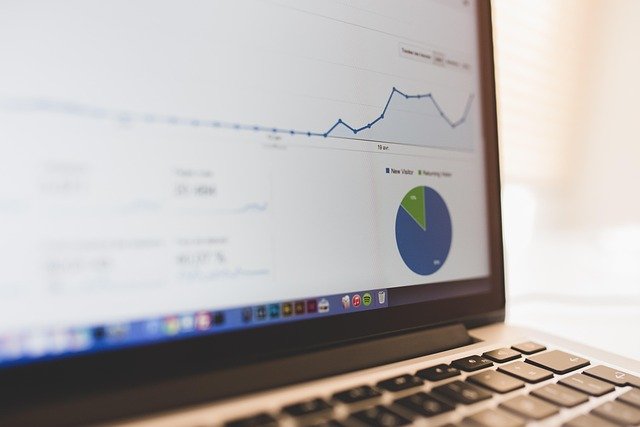Understanding Programmatic Advertising: Platforms, Tools, and Strategy Insights
Programmatic advertising has revolutionized how digital media is bought and sold, offering marketers improved efficiency, better targeting, and real-time optimization. Whether you're a media buyer, agency, or brand, understanding how demand-side platforms, real-time bidding, and AI-driven targeting work can help improve ad performance and reduce wasted spend. This article provides an in-depth look at how to plan, implement, and optimize a successful programmatic campaign—from selecting the right platforms to monitoring campaign KPIs.

How Real-Time Bidding Platforms Drive Modern Advertising
Real-time bidding (RTB) platforms represent the technological foundation of programmatic advertising. These platforms facilitate the instantaneous auction process that occurs whenever a user loads a webpage containing ad space. Within milliseconds, advertisers bid for the available impression based on user data, with the highest bidder winning the opportunity to display their advertisement. RTB platforms connect publishers with advertisers through sophisticated marketplaces where transactions occur at unprecedented speed. Major RTB platforms include Google’s Ad Exchange, OpenX, and PubMatic, each offering varying levels of inventory access and targeting capabilities. These systems continuously analyze performance metrics to optimize bidding strategies, allowing advertisers to maximize their return on investment while publishers can monetize their available inventory efficiently.
Comparing Demand-Side Platforms: Features and Capabilities
Demand-side platforms (DSPs) serve as the advertiser’s primary tool for purchasing digital ad inventory programmatically. These platforms allow marketers to manage multiple ad exchange accounts through a single interface, streamlining campaign management across various channels. When comparing DSPs, several factors warrant consideration. First, audience targeting capabilities vary significantly between platforms, with some offering more sophisticated data integration options than others. Second, the breadth of inventory access differs, with certain DSPs providing exclusive inventory opportunities. Third, the reporting and analytics features can substantially impact campaign optimization potential.
Developing an Effective Programmatic Advertising Strategy
A successful programmatic advertising strategy requires careful planning and continuous refinement. The foundation begins with clearly defined campaign objectives that align with broader business goals. Audience segmentation plays a crucial role in programmatic strategy development, as it enables precise targeting based on demographics, behaviors, and interests. Data management platforms (DMPs) help advertisers collect, organize, and activate audience data across channels to enhance targeting accuracy. Beyond initial implementation, programmatic strategies should incorporate regular testing and optimization cycles. This includes A/B testing creative elements, adjusting bidding parameters, and refining audience segments based on performance data. Companies experiencing the greatest success with programmatic advertising typically adopt an iterative approach, continuously learning from campaign results and applying those insights to future initiatives.
Cost-Effective Media Buying Through Programmatic Channels
Programmatic advertising has revolutionized media buying efficiency by reducing waste and improving targeting precision. Traditional media buying often included significant overhead costs and resulted in impressions served to irrelevant audiences. Through programmatic channels, advertisers can implement granular budget controls and adjust spending in real-time based on performance metrics. This dynamic approach allows for the reallocation of resources away from underperforming placements and toward high-performing ones. Additionally, programmatic platforms enable more sophisticated frequency capping, preventing overexposure to the same users and stretching campaign budgets further.
Essential Automated Ad Placement Tools for Modern Marketers
Modern programmatic advertising relies on a suite of automated tools that streamline the ad placement process. Ad servers manage the technical delivery of advertisements, ensuring they appear correctly across different devices and platforms. Creative management platforms (CMPs) enable advertisers to produce, store, and deploy multiple creative variations at scale, often incorporating dynamic content optimization. Verification tools monitor ad placements to ensure brand safety and prevent fraud, while attribution platforms track user journeys across multiple touchpoints to determine which ad exposures contributed to conversions.
Comparing Programmatic Advertising Platforms and Their Costs
The programmatic advertising landscape features numerous platforms with varying capabilities and cost structures. Understanding these differences is crucial for businesses seeking the most appropriate solution for their needs.
| Platform | Type | Key Features | Cost Structure | Estimated Monthly Minimum |
|---|---|---|---|---|
| Google Display & Video 360 | Full-stack | Integrated with Google ecosystem, advanced analytics | Platform fee + media spend | $10,000+ |
| The Trade Desk | Independent DSP | Cross-channel capabilities, AI-powered optimization | Platform fee percentage | $5,000+ |
| MediaMath | Independent DSP | Comprehensive data integration, custom algorithms | Percentage of media + fixed fees | $7,500+ |
| Amazon DSP | Retail-focused DSP | Amazon shopper data access, retail analytics | Platform fee + media spend | $15,000+ |
| Adobe Advertising Cloud | Enterprise solution | Integration with Adobe Experience Cloud | Software licensing + media costs | $20,000+ |
Prices, rates, or cost estimates mentioned in this article are based on the latest available information but may change over time. Independent research is advised before making financial decisions.
The Future of Programmatic Advertising Technology
As programmatic advertising continues to evolve, several emerging technologies are reshaping its capabilities. Artificial intelligence and machine learning algorithms are increasingly driving campaign optimization, identifying patterns and opportunities that human managers might miss. Contextual advertising is experiencing a renaissance as privacy regulations limit personal data usage, with advanced systems analyzing content rather than user behavior to determine relevant ad placements. Connected TV and digital audio channels represent growing frontiers for programmatic buying, extending automated advertising beyond traditional display and video formats. These technological advances suggest that programmatic advertising will continue to expand its reach while offering increasingly sophisticated targeting and measurement capabilities across an ever-widening array of digital touchpoints.




